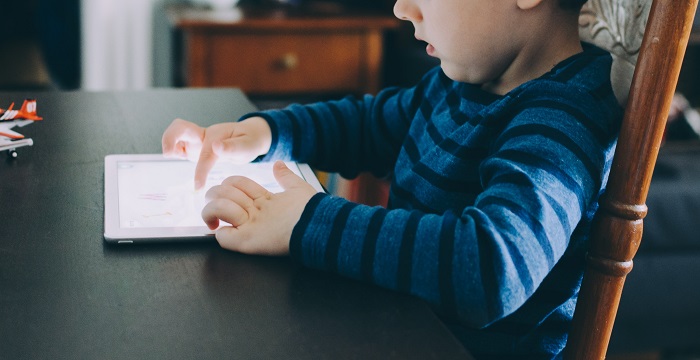
As a guide, the American Academy of Child & Adolescent Psychiatry recommends the following:
Some members of our team at The Wise Family have put their heads together on how to manage screentime and offer some insight. Many families are still following safety protocols and social distancing as our country is slowly starting to feel the new norm post-pandemic. Kids are winding down their distance learning studies, hybrid plans and sliding into Spring Break mode.
As we have now passed the one-year mark when the pandemic put our families into lockdown and changed all our lives for the long-term, many parents are starting to re-evaluate their approach to technology use at home. When the pandemic first hit, families were in survival mode, and parents were giving their kids and teenagers free reign to use technology throughout the day. Although at the time this may have made sense for the immediate future, families are now starting to feel the impact of technology use on their kids’ mental health and well-being. There is no time like the present to have a family discussion on technology use at home and to set limits.
For kids who are in middle school and high school, explain your reasoning behind limiting technology use. If your child is still virtual for school, consider having your child’s phone out of sight and unavailable during the regular hours of a school day. If kids want to have time on their phones, have designated time in the evening when this is allowed. The weather is also starting to warm up, and this means more opportunities for outside time. Go on a walk with your child before directly handing them their phone when school ends. Have time for kids to exercise, play, and create that is not contingent on technology use.
There will certainly be an adjustment period, but if your expectations are clear and consistent, eventually your kids will adapt just as they did at the beginning of the pandemic.

I get a lot of questions from parents about technology. How much screen time is too much? Is technology rotting my kid’s brain? How do I keep my child safe online?
These questions are tricky for me. While children today have never known a world without a smartphone, Google, and social media, I grew up with VHS tapes and a Walkman. I remember the amazement of getting our first desktop computer and dot matrix printer with the special paper. For those in the younger set, I’ve included a picture. 🙂 I got my first email address when I entered college and still prefer a notebook to a laptop or tablet.
As a parent, I wonder the same things that parents ask me. Are my kids having too much screen time? Is their brain development being affected? Are they safe online? These questions represent our inner struggle as adults to manage our own relationship with technology. In this digitally connected world, I will, most likely, always be a step behind my own children and those I work with when it comes to technology. Since I know I have a continual learning curve with technology I rely on reading and research. My favorite site is Common Sense Media. Common Sense’s mission is “to ensure digital well-being for kids everywhere.”
Through my ongoing learning, I have realized, that like most things, technology isn’t all good or all bad. Instead, it has real challenges and real benefits. With the support of reputable sources and expert research, we can learn together and help our kids stay safe and thrive. I look forward to learning alongside you!
Until next time, Be Wise!
“Dr. Amy is like Oprah – she’s the neighbor you love who is very, very smart”
— Parent of 14-year-old son and 18-year-old daughter“Our clinician has been a tremendous help with family issues and getting our children organized for success in life. Highly recommend her.”
— Mom of three young adults ages 20 – 24“Supporting the mental health of the kids and teens in our community is one of the most challenging and also one of the most important jobs anyone could have. And I see your team doing it with both skill and enthusiasm.Our family could not be more fortunate to have found your practice 3 years ago.
Our kids are growing up but we still keep your number on our phone and we know we can reach out to your team if we need it. We tell everyone who asks about the WISE people at The Wise Family.
Thank you for doing what you do for so many people.”—from the parent of two former clients (siblings)
— Parent of two former clients (siblings)